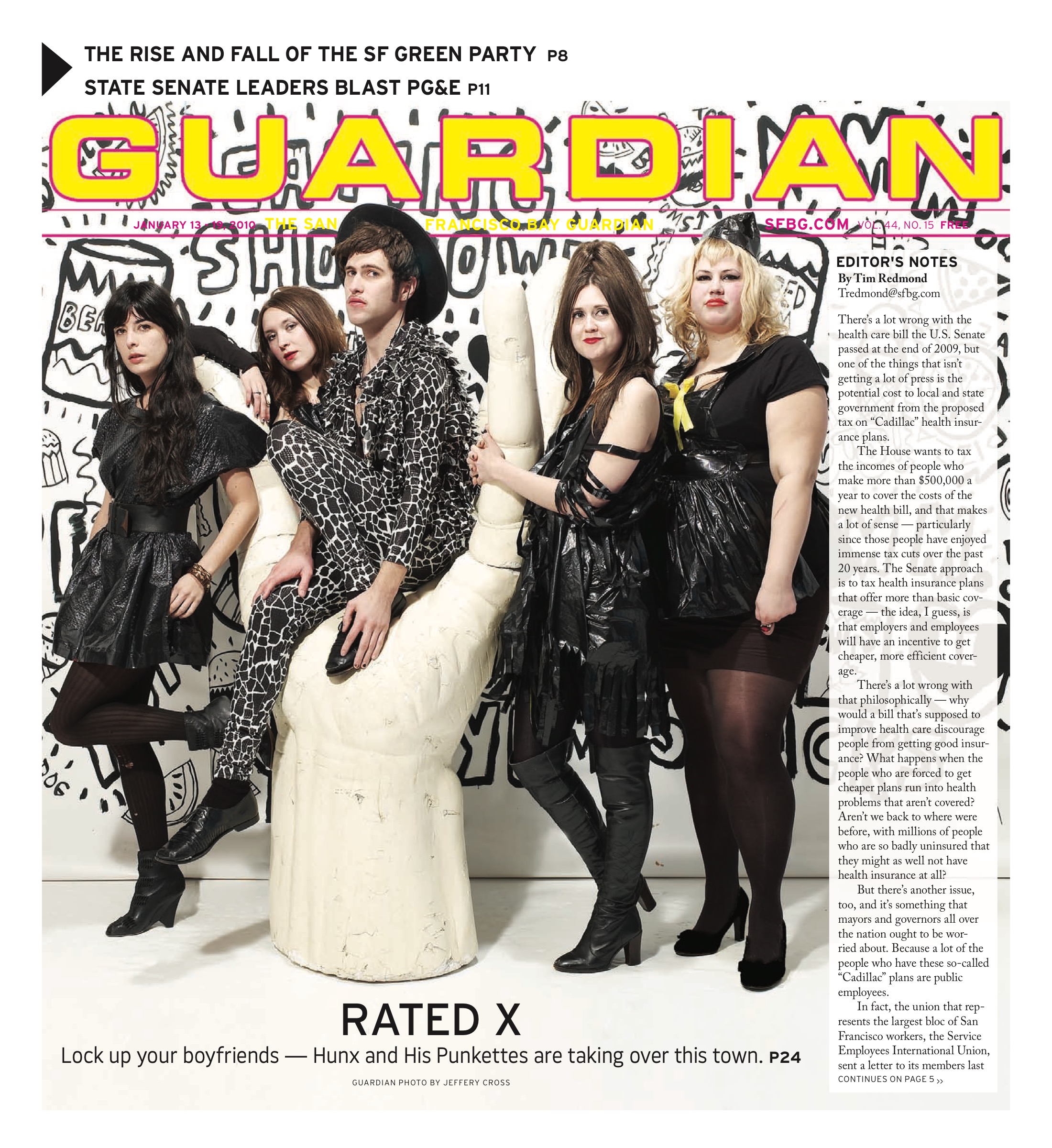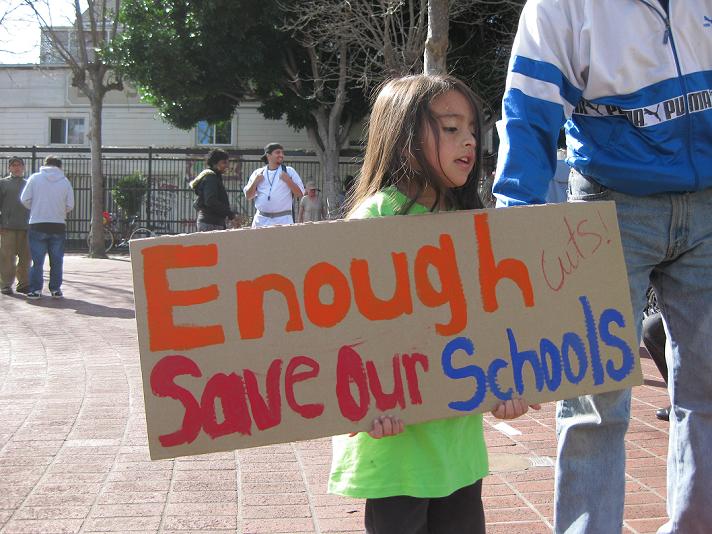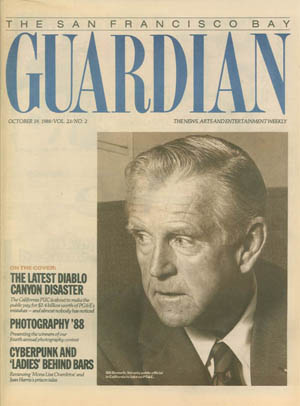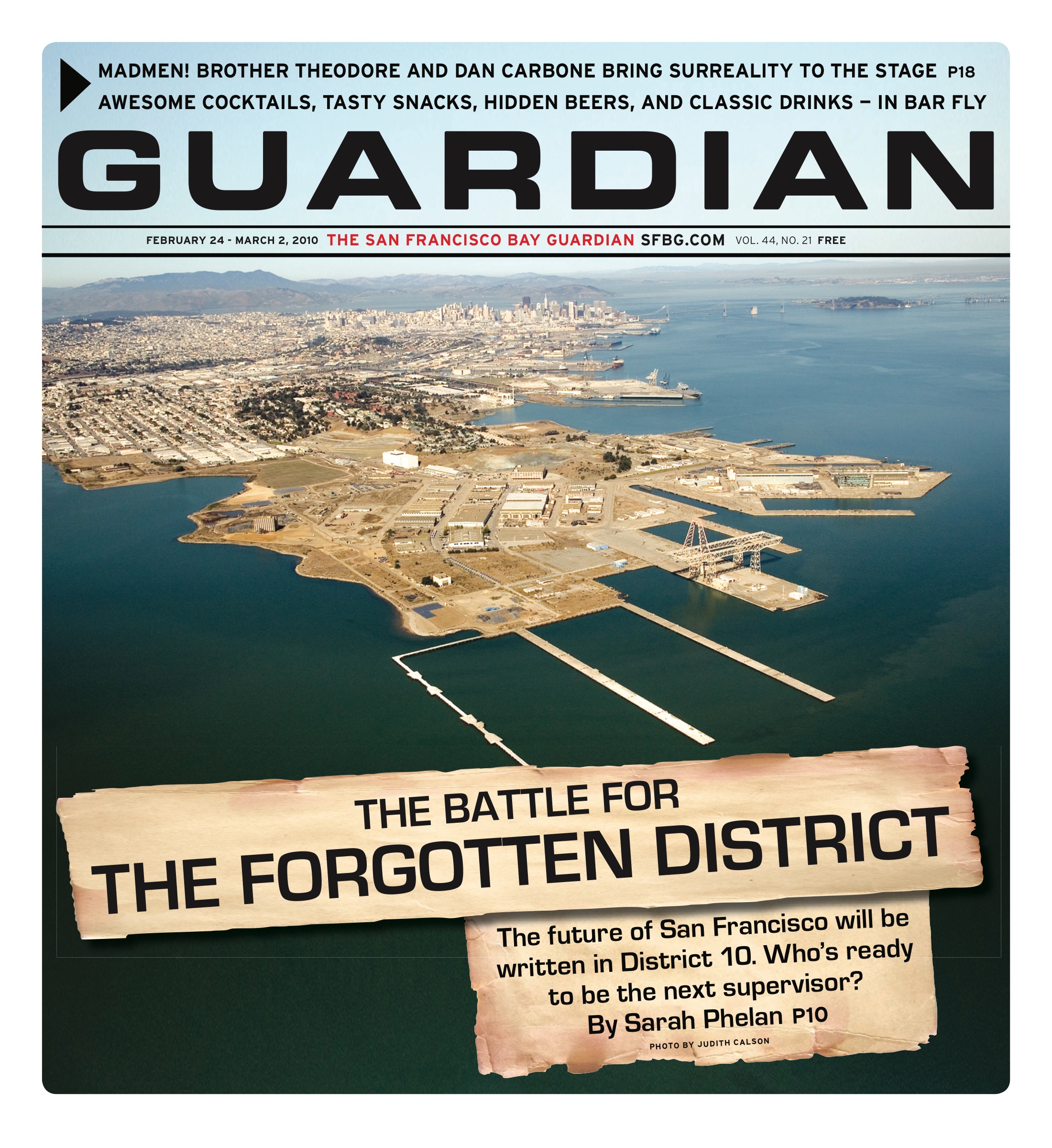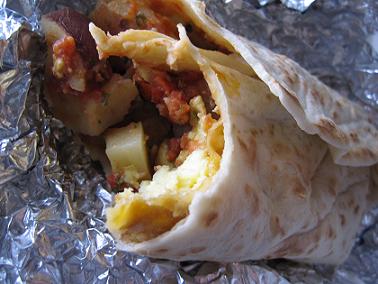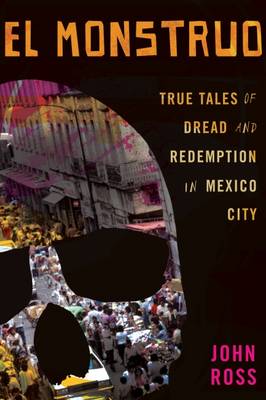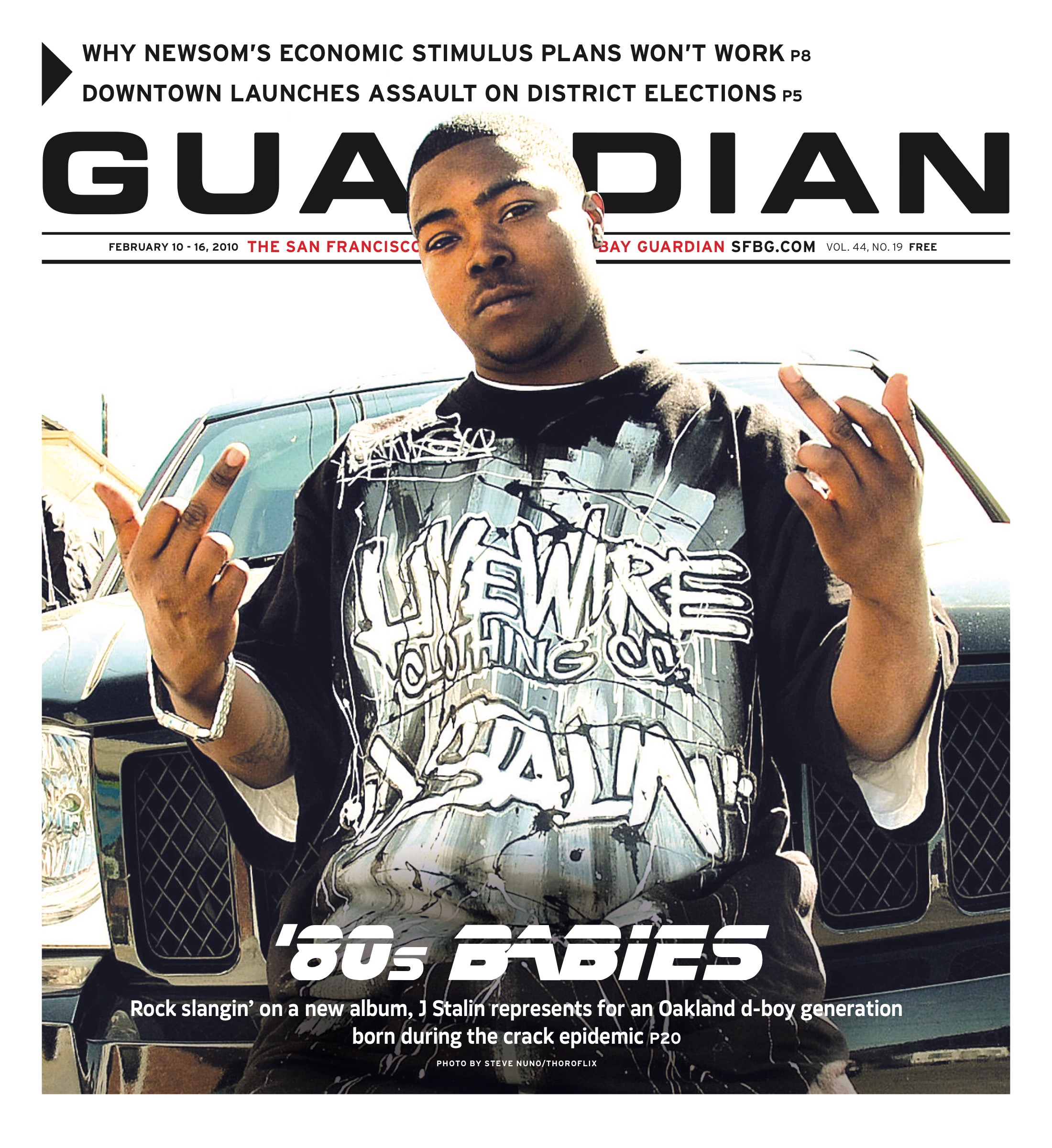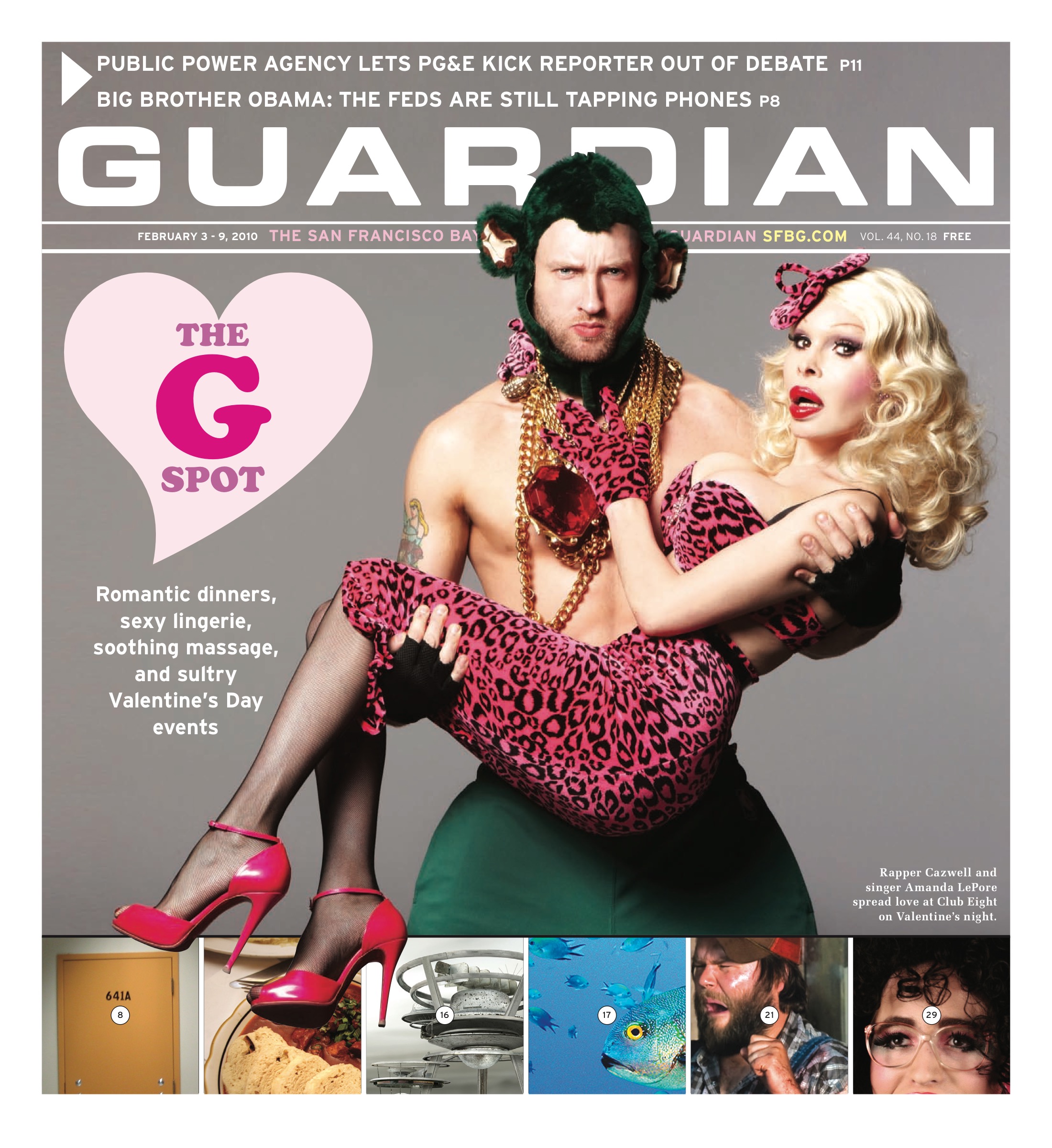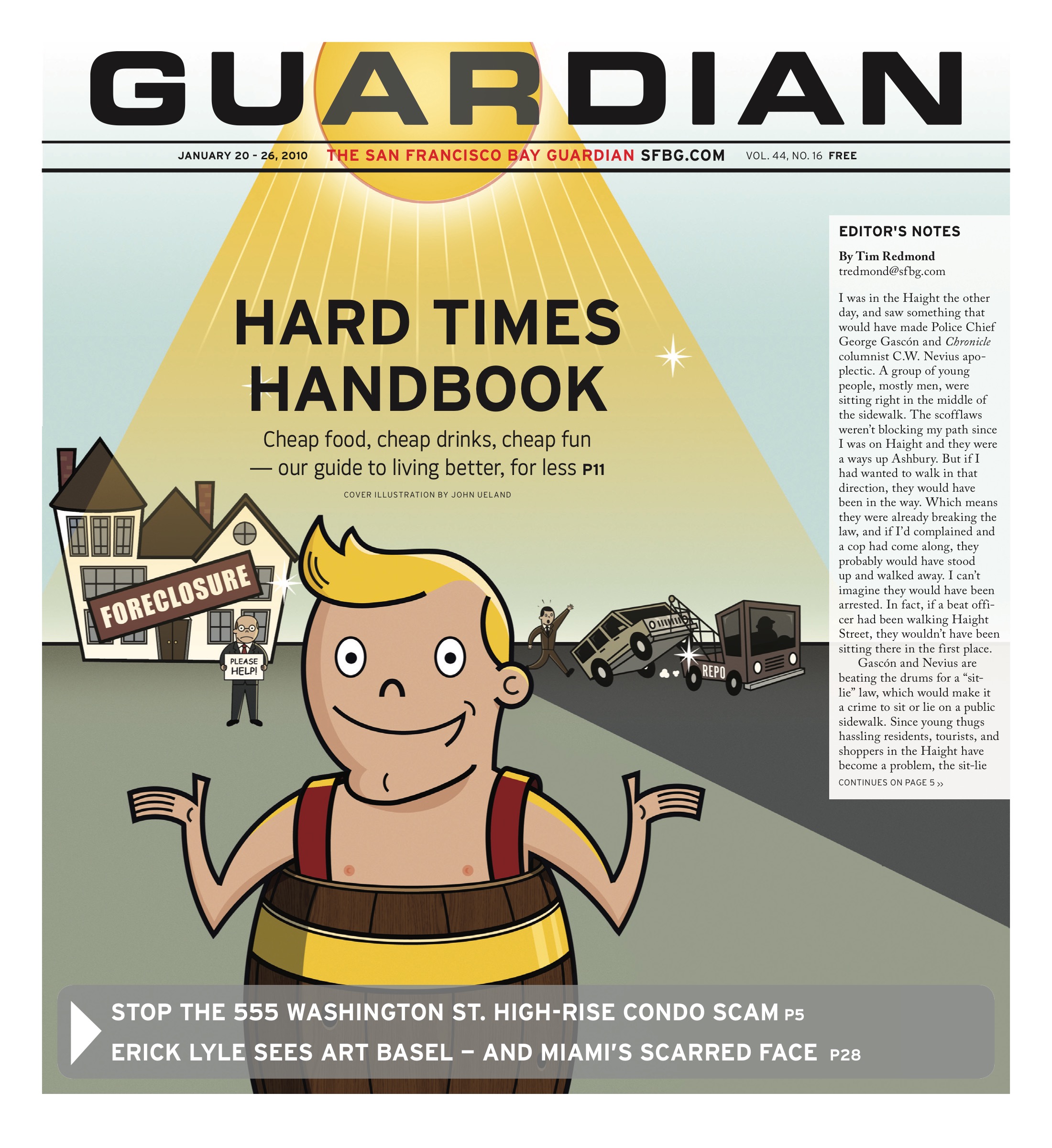Music listings are compiled by Paula Connelly and Cheryl Eddy. Since club life is unpredictable, it’s a good idea to call ahead to confirm bookings and hours. Prices are listed when provided to us. Submit items at listings@sfbg.com. For further information on how to submit items for the listings, see Picks.
WEDNESDAY 10
ROCK/BLUES/HIP-HOP
Chris "Kid" Anderson Biscuits and Blues. 8pm, $15.
Big Pink, A Place to Bury Strangers, IO Echo Great American Music Hall. 8pm, $17.
Black Rebel Motorcycle Club, Whigs, Cellar Doors Slim’s. 8pm, $30.
Basia Bulat, Shants, Christina Antipa Hotel Utah. 9pm, $12.
"Experience Hendrix Tribute Tour" Warfield. 8pm, $61.50-81.75. With Billy Cox, Joe Satriani, Sacred Steel with Robert Randolph, Jonny Lang, Eric Johnson, and more.
"Jimi Lives! A Record Release Party and Live Hendrix Tribute" Boom Boom Room. 9:30pm, $7. With Shelley Doty, Ronkat Spearman, James Nash, Jimmy Leslie, and more.
Musical Mutiny, Paulie Rhyme and Deedot, Do DAT, Rey Resurreccion, Craft, DJ Mad Hatter Elbo Room.
Pack AD, Complaints, Choke Thee Parkside. 8pm, $7.
Quasi, Explode Into Colors Independent. 8pm, $14.
Slow Club, Pleasure Kills, Saucy Jacks Rickshaw Stop. 8pm, $12.
So Cow, Bare Wires, Dreamdate Hemlock Tavern. 9pm, $7.
Laura Veirs and Hall of Flames, Old Believers, Cataldo Café du Nord. 9pm, $15.
Becky White and the Secret Mission, Damn Handsome and the Birthday Suits Bottom of the Hill. 9pm, $8.
DANCE CLUBS
Booty Call Q-Bar, 456 Castro; www.bootycallwednesdays.com. 9pm. Juanita Moore hosts this dance party, featuring DJ Robot Hustle.
Hands Down! Bar on Church. 9pm, free. With DJs Claksaarb, Mykill, and guests spinning indie, electro, house, and bangers.
Jam Wednesday Infusion Lounge. 10pm, free. DJ Slick Dee.
Mary-Go-Round Lookout, 3600 16th St., SF; (415) 431-0306. 10pm, $5. A weekly drag show with hosts Cookie Dough, Pollo Del Mar, and Suppositori Spelling.
RedWine Social Dalva. 9pm-2am, free. DJ TophOne and guests spin outernational funk and get drunk.
Respect Wednesdays End Up. 10pm, $5. Rotating DJs Daddy Rolo, Young Fyah, Irie Dole, I-Vier, Sake One, Serg, and more spinning reggae, dancehall, roots, lovers rock, and mash ups.
Synchronize Il Pirata, 2007 16th St.; (415) 626-2626. 10pm, free. Psychedelic dance music with DJs Helios, Gatto Matto, Psy Lotus, Intergalactoid, and guests.
Tenebrae Knockout. 10:30pm, $5. Dark, minimal, and electronic with DJs Omar, Josh, and Justin.
Yoruba Dance Sessions Bacano! Som., 2925 16th St., SF; (415) 558-8521. 9pm, free. With resident DJ Carlos Mena and guests spinning afro-deep-global-soulful-broken-techhouse.
THURSDAY 11
ROCK/BLUES/HIP-HOP
B and Not B, Mist and Mast, Thingers Café du Nord. 9pm, $10.
Blood and Sunshine, Gunslingers, Superfinos VTO Thee Parkside. 9pm, $6.
Brass Menazeri, Japonize Elephants Bottom of the Hill. 9:30pm, $12.
"Experience Hendrix Tribute Tour" Warfield. 8pm, $61.50-81.75. With Billy Cox, Joe Satriani, Sacred Steel with Robert Randolph, Jonny Lang, Eric Johnson, and more.
Grass Widow, Broken Water, Makeing Tents Knockout. 9:30pm, $7.
Mark Growden Porto Franco Art Parlor, 953 Valencia, SF; www.portofrancorecords.com. 8:30pm, $15-100.
Nathan James Biscuits and Blues. 8pm, $15.
Lovelikefire, Geographer, Altars Rickshaw Stop. 8pm, $12.
Manchester Orchestra, Features, Biffy Clyro, O’Brother Great American Music Hall. 7:30pm, $19.
Michael Monroe Paradise Lounge. 8pm, $15.
Elissa P, Beehive Spirit, Dot Punto Hotel Utah. 9pm, $6.
A Sunny Day in Glasgow, Gold Medalists, Apopka Darkroom Hemlock Tavern. 9pm, $8.
JAZZ/NEW MUSIC
Mo Rockin’ Coda. 9pm, $10.
South China, Myrmyr, EFFT Bluesix Acoustic Room, 3043 Fourth St, SF; www.myspace.com/bluesixcenter. 9pm.
FOLK/WORLD/COUNTRY
Ladysmith Black Mambazo Sherith Israel, 2266 California, SF; www.sfjazz.org. 7:30pm, $30-65.
DANCE CLUBS
A_Rival, Glomag, ComputeHer, x|k, Starpause, Crashfaster DNA Lounge. 9pm, $13.
Afrolicious Elbo Room. 9:30pm, $5-7. DJs Pleasuremaker and Señor Oz spin Afrobeat, Tropicália, electro, samba, and funk.
CakeMIX SF Wish, 1539 Folsom, SF. 10pm, free. DJ Carey Kopp spinning funk, soul, and hip hop.
Caribbean Connection Little Baobab, 3388 19th St; 643-3558. 10pm, $3. DJ Stevie B and guests spin reggae, soca, zouk, reggaetón, and more.
Drop the Pressure Underground SF. 6-10pm, free. Electro, house, and datafunk highlight this weekly happy hour.
Funky Rewind Skylark. 9pm, free. DJ Kung Fu Chris, MAKossa, and rotating guest DJs spin heavy funk breaks, early hip-hop, boogie, and classic Jamaican riddims.
Good Foot Yoruba Dance Sessions Bacano! Som., 2925 16th St., SF; (415) 558-8521. 9pm, free. A James Brown tribute with resident DJs Haylow, A-Ron, and Prince Aries spinning R&B, Hip hop, funk, and soul.
Gymnasium Matador, 10 6th St., SF; (415) 863-4629. 9pm, free. With DJ Violent Vickie and guests spinning electro, hip hop, and disco.
Heat Icon Ultra Lounge. 10pm, free. Hip-hop, R&B, reggae, and soul.
Kick It Bar on Church. 9pm. Hip-hop with DJ Jorge Terez.
Kissing Booth Make Out Room. 9pm, free. DJs Jory, Commodore 69, and more spinning indie dance, disco, 80’s, and electro.
Koko Puffs Koko Cocktails, 1060 Geary; 885-4788. 10pm, free. Dubby roots reggae and Jamaican funk from rotating DJs.
Motion Sickness Vertigo, 1160 Polk; (415) 674-1278. 10pm, free. Genre-bending dance party with DJs Sneaky P, Public Frenemy, and D_Ro Cyclist.
Peaches Skylark, 10pm, free. With an all female DJ line up featuring Deeandroid, Lady Fingaz, That Girl, and Umami spinning hip hop.
Represent Icon Lounge. 10pm, $5. With Resident DJ Ren the Vinyl Archaeologist and guest.
Solid Club Six. 9pm, $5. With resident DJ Daddy Rolo and rotating DJs Mpenzi, Shortkut, Polo Mo’qz and Fuze spinning roots, reggae, and dancehall.
FRIDAY 12
ROCK/BLUES/HIP-HOP
Alvon Biscuits and Blues. 8 and 10pm, $20.
Joe Bonamassa Palace of Fine Arts, 3301 Lyon, SF; www.cityboxoffice.com. 8pm, $39-69.
Vinicio Capossela Bimbo’s 365 Club. 9pm, $25.
Bart Davenport, Blue Skies for Blackhearts, Jessica Pratt, Nathan Moomaw Knockout. 9pm, 7.
Embers, Nux Vomica, Order of the Vulture, Vastrum Thee Parkside. 9:30pm, $7.
Matthew Good, Automatic Lovelatter Great American Music Hall. 9pm, $23.
Mark Growden Porto Franco Art Parlor, 953 Valencia, SF; www.portofrancorecords.com. 8:30pm, $15-100.
Gunslingers, Liquorball, Nothing People, Beaches Hemlock Tavern. 9:30pm, $7.
"Heavy Rotation" El Rio. 9pm, $5. Benefit for Lyon Martin Clinic with Terran Traumantics, Cor Leonis, Sybil Brand, and DJs Durt and Amber.
Malcontent, Attack Plan, Kid with Katana, John Enghauser, Distorted Harmony, Lunate Sigma, Audiophiles Slim’s. 7:30pm, $15.
Or the Whale, Stone Foxes, Maldives Independent. 9pm, $12.
"Phil’s 70th Birthday Bash featuring Further and Friends" Bill Graham Civic Auditorium, 99 Grove, SF; www.ticketmaster.com. 7:30pm, $41-125.
Skerdio featuring Skerik and Radioactive Coda. 10pm, $10.
Temper Trap, West Indian Girl Fillmore. 9pm, $22.50.
*Trainwreck Riders, Brothers Comatose, Kemo Sabe, Dead Westerns Café du Nord. 9pm, $12.
TV Mike and the Scarecrowes, Odawas, Donovan Quinn and the 13th Month, Dameon Lee Hotel Utah. 9pm, $8.
You Say Party! We Say Die!, Fake Your Own Death, Nylon Heart Attack Bottom of the Hill. 10pm, $10.
JAZZ/NEW MUSIC
Audium 9 1616 Bush, SF; (415) 771-1616. 8:30pm, $15.
Black Market Jazz Orchestra Top of the Mark. 9pm, $10.
Eric Kurtzrock Trio Ana Mandara, Ghirardelli Square, 891 Beach, SF; (415) 771-6800. 8pm, free.
NEA Jazz Masters All-Stars Yoshi’s San Francisco. 8 and 10pm, $20-30.
Dianne Reeves Herbst Theatre, 401 Van Ness, SF; www.sfjazz.org. 8pm, $35-80.
Reich/Fabricant/Kierbel Revolution Café, 3248 22nd St, SF; (415) 642-0474. 8:45pm, free.
FOLK/WORLD/COUNTRY
Conjunto Picante Cigar Bar and Grill, 850 Montgomery, SF; www.cigarbarandgrill.com. 9pm, $7.
Encuentamiento Red Poppy Art House. 8pm, $8-12.
DANCE CLUBS
Activate! Lookout, 3600 16th St; (415) 431-0306. 9pm, $3. Face your demigods and demons at this Red Bull-fueled party.
Bar on Church 9pm. Rotating DJs Zax, Zhaldee, and Nuxx.
Blow Up Rickshaw Stop. 10pm, $10. With rotating DJs.
Exhale, Fridays Project One Gallery, 251 Rhode Island; (415) 465-2129. 5pm, $5. Happy hour with art, fine food, and music with Vin Sol, King Most, DJ Centipede, and Shane King.
Fake Blood and Boy 8-Bit Mezzanine. 9pm, $15.
Fat Stack Fridays Koko Cocktails, 1060 Geary, SF; (415) 885-4788. 10pm, free. With rotating DJs Romanowski, B-Love, Tomas, Toph One, and Vinnie Esparza.
Fo’ Sho! Fridays Madrone. 10pm, $5. DJs Kung Fu Chris, Makossa, and Quickie Mart spin rare grooves, soul, funk, and hip-hop classics.
Gay Asian Paradise Club Eight, 1151 Folsom, SF; www.eightsf.com. 9pm, $8. Featuring two dance floors playing dance and hip hop, smoking patio, and 2 for 1 drinks before 10pm.
Good Life Fridays Apartment 24, 440 Broadway, SF; (415) 989-3434. 10pm, $10. With DJ Brian spinning hip hop, mashups, and top 40.
Gymnasium Stud. 10pm, $5. With DJs Violent Vickie and guests spinning electro, disco, rap, and 90s dance and featuring performers, gymnastics, jump rope, drink specials, and more.
Hot Chocolate Milk. 9pm, $5. With DJs Big Fat Frog, Chardmo, DuseRock, and more spinning old and new school funk.
Look Out Weekend Bambuddha Lounge. 4pm, free. Drink specials, food menu and resident DJs White Girl Lust, Swayzee, Philie Ocean, and more.
M4M Fridays Underground SF. 10pm-2am. Joshua J and Frankie Sharp host this man-tastic party.
Rockabilly Fridays Jay N Bee Club, 2736 20th St., SF; (415) 824-4190. 9pm, free. With DJs Rockin’ Raul, Oakie Oran, Sergio Iglesias, and Tanoa "Samoa Boy" spinning 50s and 60s Doo Wop, Rockabilly, Bop, Jive, and more.
Strictly Video 111 Minna. 9pm, $10. With VDJs Shortkut, Swift Rock, GoldenChyld, and Satva spinning rap, 80s, R&B, and Dancehall.
Treat Em Right Elbo Room. 10pm, $5. With DJs Vinnie Esparza, B. Cause, and guest Similak Chyld.
Von Gutenberg Fetish Ball DNA Lounge. 9pm, $35. Burlesque performance and DJ dance party.
SATURDAY 13
ROCK/BLUES/HIP-HOP
*Adolescents, Youth Brigade, Departed Slim’s. 9pm, $18.
Audrye Sessions, Dave Smallen, Poor Bailey Bottom of the Hill. 10pm, $12.
*Cromags, H2O, Alpha and Omega, Never Healed Thee Parkside. 9pm, $15.
Aram Danesh and the Superhuman Crew and Skerdio Coda. 10pm, $10.
Devil Said Maybe, Goldenhearts, Kelly McFarling Hotel Utah. 9pm, $10.
Future Blondes, Bangs of Hunger, Didimao Hemlock Tavern. 9:30pm, $6.
Mark Growden Porto Franco Art Parlor, 953 Valencia, SF; www.portofrancorecords.com. 8:30pm, $15-100.
New Found Glory, Saves the Day, hellogoodbye, Fireworks Regency Ballroom. 8pm, $24.
New Mastersounds, Trombone Shorty and Orleans Ave, Salvador Santana Band Fillmore. 9pm, $25.
Smokey Robinson Warfield. 9pm, $64-87.
EC Scott Biscuits and Blues. 8 and 10pm, $20.
*Titan Ups, Sonny and the Sunsets, Beaches, Kelley Stoltz Amnesia. 9pm, $8.
Triple Cobra, Free Moral Agents, Lilofee Café du Nord. 9:30pm, $12.
Verbal Abuse, Acephalix, Poison Control Thee Parkside. 3pm, free.
JAZZ/NEW MUSIC
Audium 9 1616 Bush, SF; (415) 771-1616. 8:30pm, $15.
Eric Kurtzrock Trio Ana Mandara, Ghirardelli Square, 891 Beach, SF; (415) 771-6800. 8pm, free.
Josh Jones Cigar Bar and Grill, 850 Montgomery, SF; www.cigarbarandgrill.com. 9pm, $7.
NEA Jazz Masters All-Stars Yoshi’s San Francisco. 8 and 10pm, $30.
Rudresh Mahanthappa’s Indo-Pak Coalition Swedish American Hall (upstairs from Café du Nord). 8pm, $25.
Ricardo Scales Top of the Mark. 9pm, $15.
Curt Yagi and the People Standing Behind Me Enrico’s, 504 Broadway, SF; http://enricossf.com/. 8pm, free.
FOLK/WORLD/COUNTRY
Juan Cuba Red Poppy Art House. 8pm, $12-15.
Culann’s Hounds, Colm O’Riain, Gas Men Great American Music Hall. 9pm, $25.
Sambada, La Colectiva, DJ Papa Chango Independent. 9pm, $15.
DANCE CLUBS
Bar on Church 9pm. Rotating DJs Foxxee, Joseph Lee, Zhaldee, Mark Andrus, and Niuxx.
Jahdan Blakkamore, Kush Arora, Lud Dub, DJ Theory Rock-It Room. 10pm, $5-10.
Bootie DNA Lounge. 9pm, $6-12. Mash-ups with Morgoth, Adrian and Mysterious D, Dada, and more.
Club 1994 111 Minna. 9pm, $10. Jeffrey Paradise, Richie Panic, and guest DJs Mei Lwun and Eli Glad celebrate the 1990s.
Cockblock Rickshaw Stop. 10pm, $7. The queer dance party celebrates its fourth anniversary with DJ Nuxx, singer Dev, and DJ Havoc.
*Dan the Automator presents Audio Alchemy Yoshi’s San Francisco. 10:30pm, $20. Featuring Emily Wells, Daniel Wu, Terence Yin, and Lateef the Truthspeaker.
Frolic Stud. 9pm, $3-7. DJs Dragn’Fly, NeonBunny, and Ikkuma spin at this celebration of anthropomorphic costume and dance. Animal outfits encouraged.
HYP Club Eight, 1151 Folsom, SF; www.eightsf.com. 10pm, free. Gay and lesbian hip-hop party.
Reggae Gold SF Endup. 10pm, $5. With DJs Daddy Rolo, Polo Mo’Quuz, and more spinning reggae, dancehall, and remixes all night.
Same Sex Salsa and Swing Magnet, 4122 18th St., SF; (415) 305-8242. 7pm, free.
Social Club LookOut, 3600 16th St., SF; (415) 431-0306. 9pm. Shake your money maker with DJs Lee Decker and Luke Fry.
Spirit Fingers Sessions 330 Ritch. 9pm, free. With DJ Morse Code and live guest performances.
Spotlight Siberia, 314 11th St., SF. 10pm. With DJs Slowpoke, Double Impact, and Moe1.
Tormenta Tropical Elbo Room. 10pm, $5-10. With Matias Aguayo, Disco Shawn, and Oro 11.
SUNDAY 14
ROCK/BLUES/HIP-HOP
*Cromags, H2O, Alpha and Omega, Wolves and Thieves Thee Parkside. 8pm, $15.
Del McCoury Band Great American Music Hall. 8pm, $26.
Litany for the Whale, Makai Hemlock Tavern. 9pm, $6.
Mark Growden Porto Franco Art Parlor, 953 Valencia, SF; www.portofrancorecords.com. 2 and 8:30pm, $15-100.
"Scarlett Fever" DNA Lounge. 1-9pm, $15. Benefit and awareness-raising for Rett Syndrome with Three Bad Jacks, Big Sandy and His Fly-Right Boys, Stigma 13, Factory Minds, and more.
Scrabbel, Surf City, Art Museum Rickshaw Stop. 8pm, $10.
JAZZ/NEW MUSIC
Terry Disley Washington Square Bar and Grill, 1707 Powell, SF; (415) 433-1188. 6pm, free.
Kay Kostopoulos All Gal Band Bliss Bar, 4026 24th St, SF; (415) 826-6200. 4:30pm, $10.
NEA Jazz Masters All-Stars Yoshi’s San Francisco. 5 and 7pm, $5-30.
Maceo Parker Palace of Fine Arts, 3301 Lyon, SF; www.sfjazz.org. 7pm, $25-65.
FOLK/WORLD/COUNTRY
"Salsa Sundays" El Rio. 4:15pm, $5.
Vandalla, Mission 3 Thee Parkside. 4pm, free.
Robin Yukiko Bazaar Café, 5927 California, SF; www.robinyukiko.com. 6pm, free.
DANCE CLUBS
DiscoFunk Mashups Cat Club. 10pm, free. House and 70’s music.
Dub Mission Elbo Room. 9pm, $6. Dub, roots, and classic dancehall with DJ Sep, J Boogie, and guest DJ Crazy Baldhead.
Fresh Ruby Skye. 6:30pm, $20-25. With DJ Kimberly S.
Gloss Sundays Trigger, 2344 Market, SF; (415) 551-CLUB. 7pm. With DJ Hawthorne spinning house, funk, soul, retro, and disco.
Honey Soundsystem Paradise Lounge. 8pm-2am. "Dance floor for dancers – sound system for lovers." Got that?
Kick It Bar on Church. 9pm. Hip-hop with DJ Zax.
Religion Bar on Church. 3pm. With DJ Nikita.
Stag AsiaSF. 6pm, $5. Gay bachelor parties are the target demo of this weekly erotic tea dance.
MONDAY 15
ROCK/BLUES/HIP-HOP
Balkan Beat Box Fillmore. 8pm, $22.50.
Efterklang, Tartufi, VIR Bottom of the Hill. 9:30pm, $12.
Get Hustle, Past Lives, Clipd Beaks, Bronze Elbo Room. 9pm, $8-10.
*Suidakra, Cormorant, Ashkira, DJ Rob Metal Thee Parkside. 8:30pm, $10.
DANCE CLUBS
Bacano! Som., 2925 16th St., SF; (415) 558-8521. 9pm, free. With resident DJs El Kool Kyle and Santero spinning Latin music.
Black Gold Koko Cocktails, 1060 Geary; 885-4788. 10pm-2am, free. Senator Soul spins Detroit soul, Motown, New Orleans R&B, and more — all on 45!
Death Guild DNA Lounge. 9pm, $5-10. Goth and industrial with Decay, Joe Radio, and Melting Girl.
M.O.M. Madrone Art Bar. 6pm, free. With DJ Gordo Cabeza and guests playing all Motown every Monday.
Manic Mondays Bar on Church. 9pm. Drink 80-cent cosmos with Djs Mark Andrus and Dangerous Dan.
Monster Show Underground SF. 10pm, $5. Cookie Dough and DJ MC2 make Mondays worth dancing about, with a killer drag show at 11pm.
Network Mondays Azul Lounge, One Tillman Pl; www.inhousetalent.com. 9pm, $5. Hip-hop, R&B, and spoken word open mic, plus featured performers.
TUESDAY 16
ROCK/BLUES/HIP-HOP
A Decent Animal, Glass Train, DJ Tascho Café du Nord. 8:30pm, $10.
Late Nite Drive, Full On Flyhead, The Release Bottom of the Hill. 9pm, $8.
Moonlight Orchestra featuring Micropixie, Star FK Radium Hotel Utah. 8pm, $6.
Mujahedin Bernstein Affair, Diminished Men Hemlock Tavern. 9pm, $6.
Silverhands, Wyatt Sweet El Rio. 8pm, free.
DANCE CLUBS
Alcoholocaust Presents Argus Lounge. 9pm, free. With DJ What’s His Fuck and DJ Tron.
Eclectic Company Skylark, 9pm, free. DJs Tones and Jaybee spin old school hip hop, bass, dub, glitch, and electro.
La Escuelita Pisco Lounge, 1817 Market, SF; (415) 874-9951. 7pm, free. DJ Juan Data spinning gay-friendly, Latino sing-alongs but no salsa or reggaeton.
Share the Love Trigger, 2344 Market, SF; (415) 551-CLUB. 5pm, free. With DJ Pam Hubbuck spinning house.
VNV Nation DNA Lounge. 9pm, $25. Part of Death Guild’s 17th anniversary celebration.
Womanizer Bar on Church. 9pm. With DJ Nuxx.



